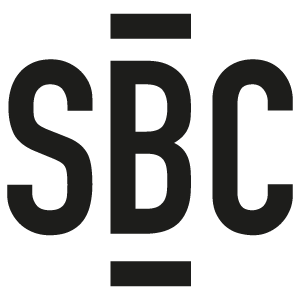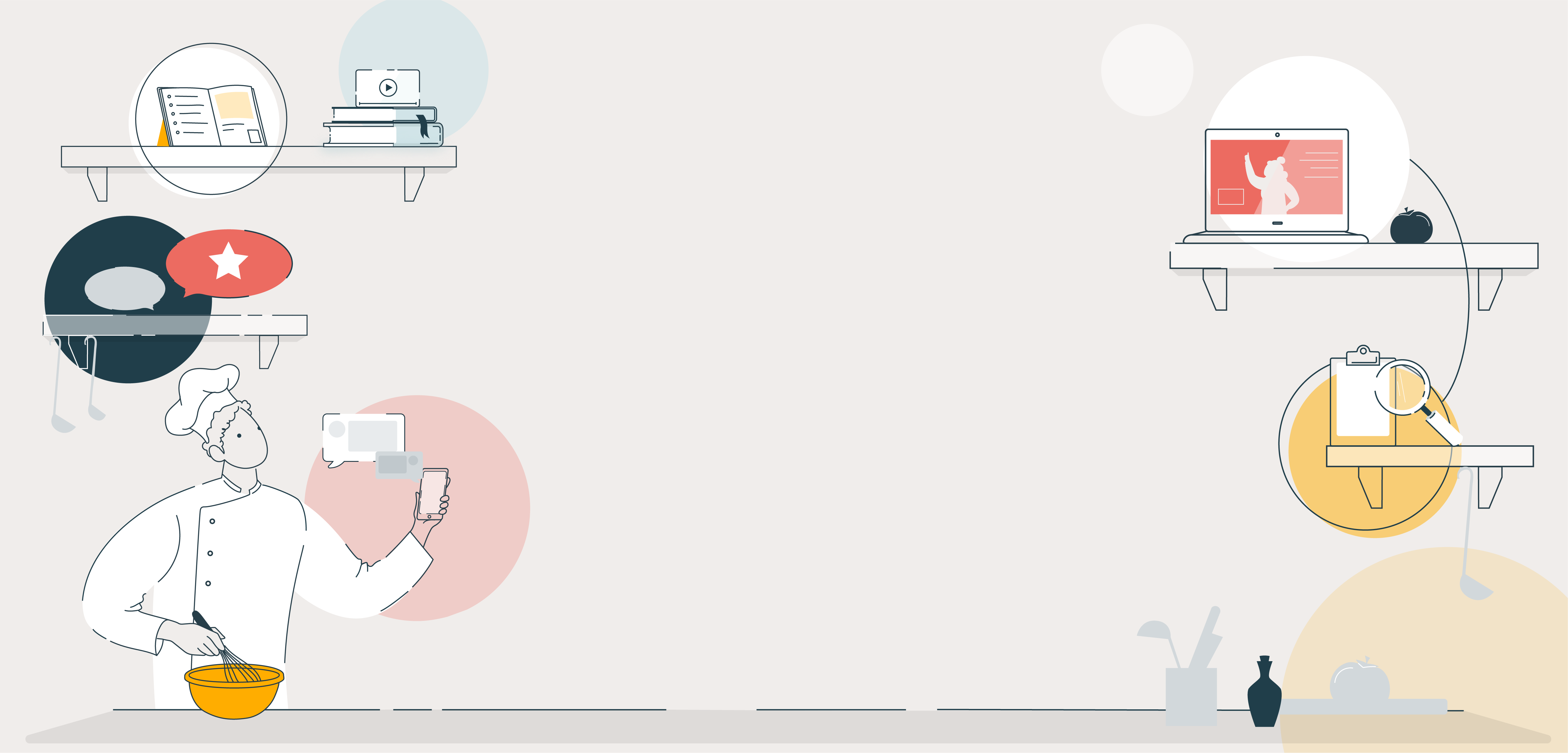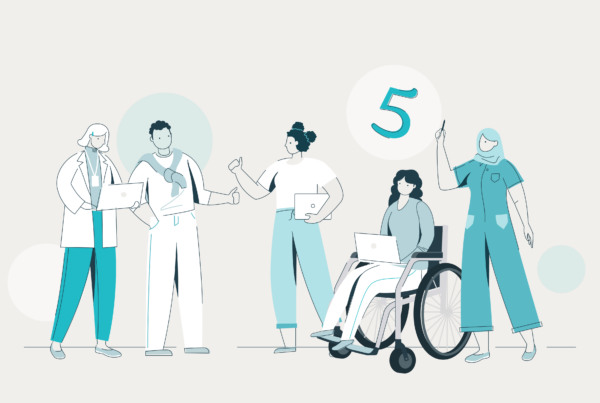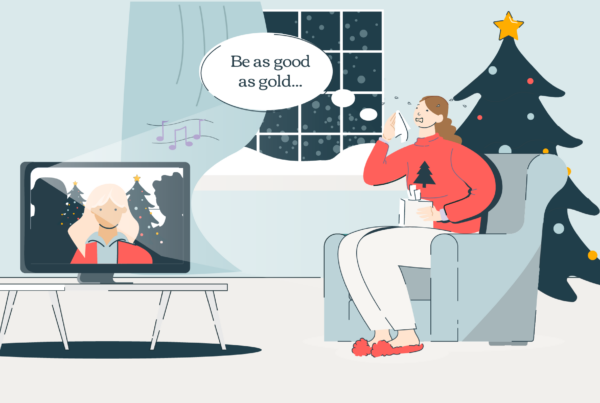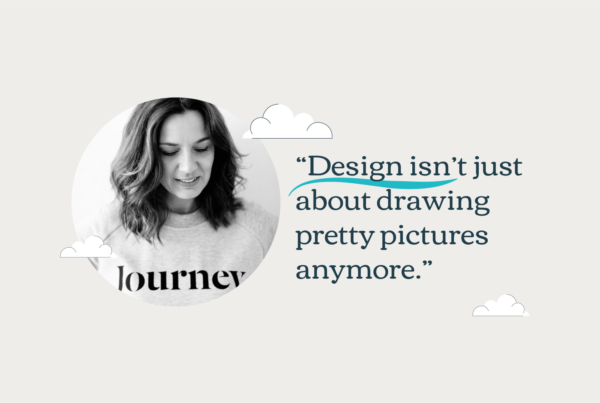Welcome to the third and final part of our Learning Live session.
Let’s recap: first, we marvelled at the spellbinding effects of storytelling in L&D. Then, we shone a spotlight on how to make learning truly rewarding. Now, we turn our attention to communities of practice.
The term communities of practice (CoP) first emerged in the early 1990s. In their 1991 book, Situated Learning, cognitive anthropologist Jean Lave and educational theorist Etienne Wenger-Trayner defined them as:
“Groups of people who share a concern or passion for something they do and learn how to do it better as they interact regularly.”
Which is all very good in principle, but how do communities of practice actually work in, well, practice? And is there a special recipe for social learning that really works?
We think there is.
Time to put on our chef’s whites and get cracking.
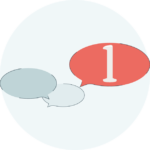 First, have a think about why you want to use communities of practice in the first place.
First, have a think about why you want to use communities of practice in the first place.
Before you start, you’ll want to explain the context. This is the big picture stuff. What would you like to achieve? How do your learning goals fit into the story of your company’s overall goals and purpose, and how will your communities of practice help? How can you gauge your success?
Basically, explain your CoP goals within the context of your overall learning strategy, and consider the value social learning will bring both to the organisation and to those involved.
And who should deliver the key messages behind both your learning goals and your shiny new community of practice? You know, the big stuff. Things like: how learning is central to human identity, and how these particular skills will transform your industry. And the smaller stuff, too. Like, what’s the etiquette? Will your communities be formal or informal? Can people bring snacks to classes and meetings?
Messenger effects highlight that those delivering messages are as important as what’s being said, and we tend to believe messages from those in authority who we like more. So if you can, try and get one of your popular senior leaders to help you set the context and spread the word.
You may be asking, “Do I really need to start with this?”
We won’t mince our words: Yes. Establish the right context and the other stages should flow. If you’re struggling with a philosophical, big-picture angle, consider this: companies with a performance-enhancing culture grew 756% more over 11 years, than those without.
 Context sorted? Great. Now it’s time to think about the various elements.
Context sorted? Great. Now it’s time to think about the various elements.
Next, you’ll want to make sure you have the right components. How might you bring everything together? How will the self-directed elements work with the more social elements of your programme? What will be voluntary and what will be mandatory? Getting groups together to learn can be organic or more manufactured. They can be structured, informal or somewhere in between. Knowledge can be shared over coffee and doughnuts every Wednesday afternoon or can take place in break-out rooms two mornings a week. How they happen is organisation-dependent.
‘The ability to learn faster than your competitors may be the only sustainable competitive advantage you have.’ Or so said Arie de Geus, widely credited as coming up with the concept of a ‘learning organisation’. For fast learning to thrive, something has to happen, and that something will be made up of various components.
“Can I just skip this bit?”
Please don’t. Nobody bakes a cake without writing a shopping list. (Actually, plenty of people do. But they end up with five packets of biscuits, two bottles of wine and no self-raising flour.) So make sure you have a list of what you’ll need. And, if you can, let your learners have some freedom to choose what combination of elements works best for them.
Next, decide on what goes in your communities of practice.
With the context and components simmering away nicely, you’ll want to think about the type of actual content to include. Keep it fresh, zesty and relevant. We have more information available at our fingertips today than ever before, so when it comes to content, the issue isn’t access to information – it’s about picking the right information. Provide high-quality and relevant self-directed learning resources: videos, online courses, and reading that’s engaging. And remember to keep updating it and adding new things, as there’s nothing more demotivating than learning content that’s three years out of date.
“Are you sure this ingredient’s important?”
We’re certain. Content, after all, is king. Offer information that increases our ability to learn – jam-packed with storytelling, relevance, and rewards – to really bring to life your communities of practice. The cherry on top is getting your teams to hunt out and share interesting content that they find.
 Then add liberal amounts of places where learning can take place.
Then add liberal amounts of places where learning can take place.
You’ll need some classes. But where’s best to serve up this smorgasbord of learning? The obvious answer is online. It’s where we share information, swap stories, and help each other out. Plus, look around: we love staring at screens. So having some self-directed e-learning elements works wonders. But consider sprinkling in some face-to-face learning or at least ‘live’ webinars or instructor-led sessions online.
“You’re winning me over. Any tips on classes?”
When it comes to classes, it really depends on what you are teaching and how much interaction in class is needed. If you want your classmates to be close, keep places in some of your classes limited to between 15 and 50. You could run the same class several times and invite learners to sign up for the date and time that suits them best. For your overall communities of practice, remember Dunbar’s number when it comes to size: any more than 150 and it may get a little out-of-shape.
 It’s time to get mixing.
It’s time to get mixing.
With all the resources in place, it’s time to think about building those communities of practice. You’ll want to create groups and subgroups on Slack, Microsoft Teams, or a getting-together portal of your choosing. Somewhere your teams can share information, tell stories, let other people know the novel way they solved a problem and, yes, sometimes post hilarious and not-so-hilarious memes.
“Does this work?”
Absolutely. One stand-out example of shared knowledge is Xerox’s online Eureka programme. Eureka allowed Xerox employees from all corners of the planet to swap information and generally help each other out. Debuting in 1994, it’s been reported that this knowledge-sharing programme saved Xerox over $100 million.
 Finally, add a generous helping of getting together
Finally, add a generous helping of getting together
The ingredient that keeps on giving is connection. When Lave and Wenger-Trayner observed situational learning happening in groups – Liberian tailors, navy quartermasters and meat cutters among them – they found that most of the learning took place among the apprentices; not top-down learning from the masters. Connection is about building relationships and sharing tacit knowledge (gained from experience), a more powerful way to learn than simply sharing explicit knowledge, (which can often be picked up from a book).
“Okay, I’m convinced. How do I keep these connections from going stale?”
First, thanks for – finally! – joining in with our cooking metaphor.
Second, just keep things fresh by having an eye on all of the C’s. Consider reviewing and refreshing them once a year. Always bear in mind the wider context and make sure to create regular spaces and times to tap into our age-old desires to be together and learn.
And there you have it. Whisk those six ingredients together to make your communities of practice the crème de la crème.
